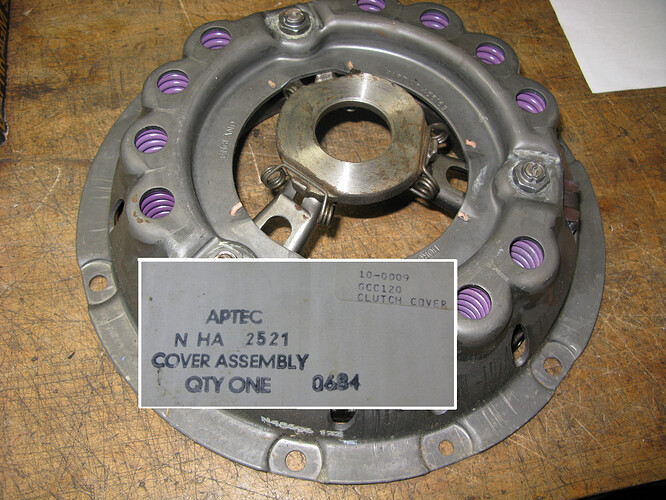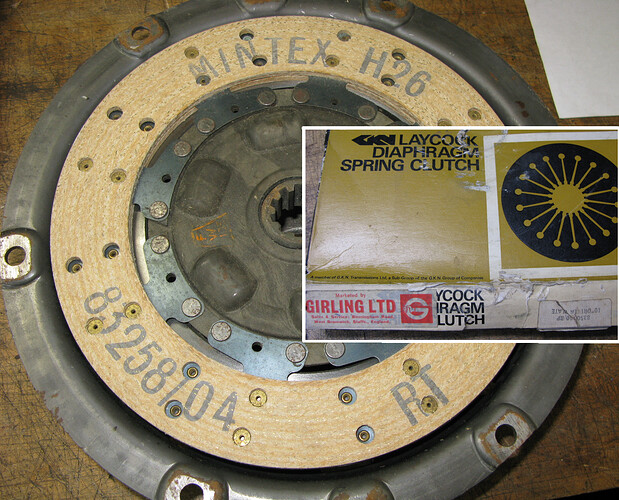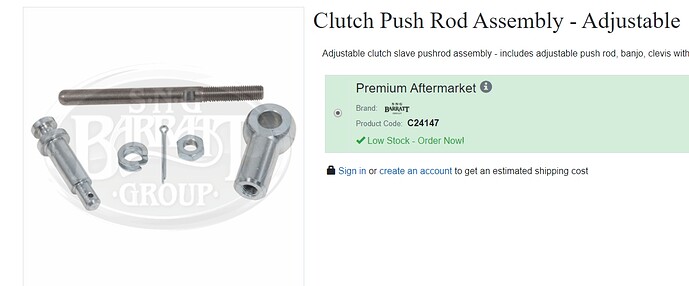True, but not what the term hydrostatic is referring to. It is the adjustment that is being referred to as hydrostatic. (Didn’t we address this before. ![]() )
)
One can define things as one wishes, but I have trouble following your disagreement. However, the reason for adjustment routine on the non hydrostatic is because as the clutch disk wears, the 1/16" free play decreases. If it decreases too much it approaches 0 inches, and then goes to the point that the pressure plate is actually being slightly pushes, eventually causing the clutch to slip. So to prevent clutch slipping, one must readjust some clearance into it by manually and mechanically adjusting the push rod. On the hydrostatic system it is not initially adjusted to 1/16" free play. The rod/piston is pushed back to bottom out. Then manually mechanically adjusted initially to 3/4 inch free play. When one presses the pedal, the fluid pushes the TOB to the PP, and released, as you said, the PP pushes the TOB, rod, and piston back only to the 0 inch free play. And it will remain there until/as the clutch disk wears. As it wears, the TOB, rod and piston are all pushed back into the cylinder just a little bit further. When it moves 1/16 of an inch that is no problem as it just simply pushes more fluid back into the slave to keep the 0 free play, but no clutch disk slippage. So rather than someone manually mechanically adjusting the push rod to gain the 1/16 inch free play on the non hydrostatic system, on the hydrostatic system, the 0 free play is maintained automatically by less fluid in the cylinder. Thus automatic hydrostatically adjusting.
Okay, yes it is powered by the clutch springs, but the adjustment is taken up by, thus adjusted by, the change in fluid volume in the cylinder rather than the length of the push rod.
Agreed, but if one follows the manual, that is seldom a problem.
100% agree, which is why I do not understand why everyone keeps trying to do it different. Choose one of Jaguar’s two methods and stick with it. I, like many do prefer the non hydrostatic.
Does it? I do not have the evidence, but I would not be surprised that by the time one takes into account the crank end play, flywheel runout, PP runout that the TOB may actually be pushed back far enough to actually no longer be actually dragging. Maybe skimming? I am not sure the internal slave spring is strong enough to overcome the piston seal friction. If it is, then just minimal drag.
Again, per Jaguar’s and the entire automotive industry, it is considered to be automatically hydraulically adjusted.
With all due respect, that was your choice. You could have done it without trying to change everything around. You could have chosen to do it Jaguar’s way in been done in a reasonable amount of time. Your choice, not a Jaguar issue.
I am not completely disagreeing with you here. But Jaguar’s goal was to avoid excessive pressure on the PP to avoid clutch slippage. I believe in their minds, the TOB was NOT the problem. After all, keep in mind, as the clutch is used, the clearance, per what others have previously posted, and I agree, the free play decreases. If the TOB was wearing, the free play would increase. Thus the clutch disk was wearing out faster than the TOB. TOB was not their issue. We have made the TOB the issue.
Not sure how a worn system is relevant. My assumption is that typically the linkages will outlast a clutch disk. and at the point of replacing the disk, then all other worn parts should be addressed.
Tom






